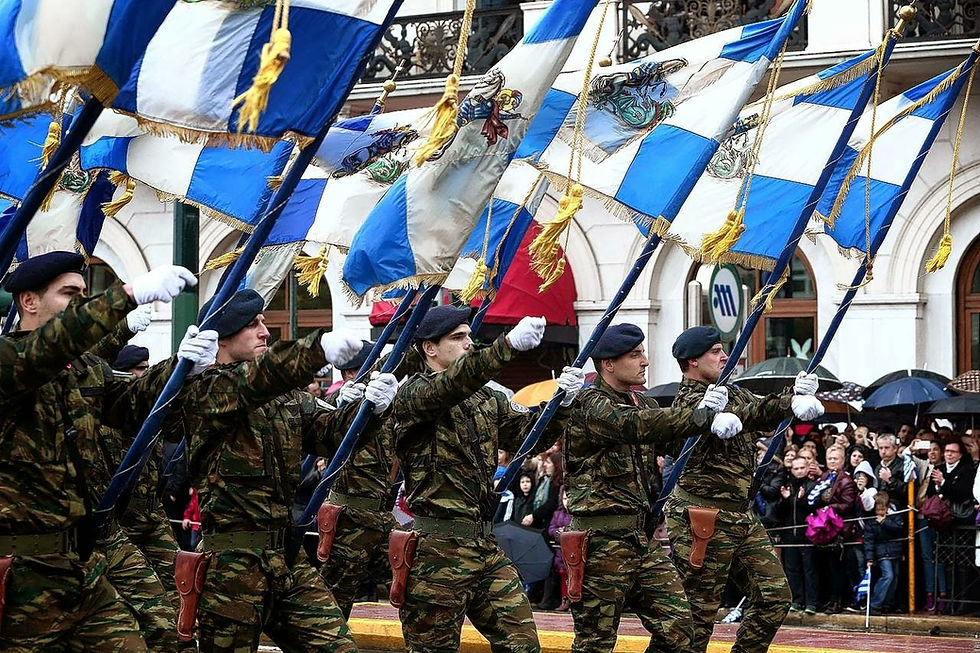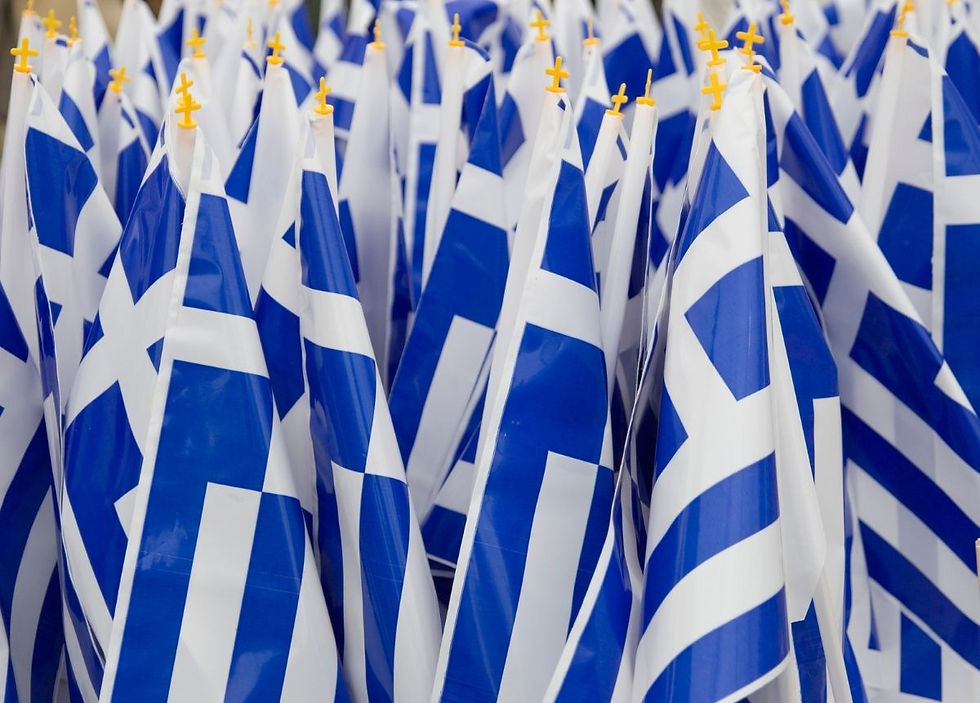Ελευθερία ή θάνατος, Freedom or Death -

Today's the day we celebrate Independence Day!
The Greek Revolution against the Ottoman Empire, which commenced in 1821 and eventually led to the establishment of an independent Greek state.
Why this day is important

Greece had been a part of the Ottoman Empire since 1453. Through the years the Greeks had a growing feeling of oppression and unrest against the Turks. Two main factors were their total disregard for Greece’s glorious past, and that Orthodox Christians (most of the Greek population) couldn’t publicly express their faith. This resulted in several resistance movements forming through the duration of Turkish rule. However, it wasn’t until March 25, 1821 that these movements posed any real threat to the Ottoman Empire. On this day Bishop Germanos of Patras raised the Greek flag at the Monastery of Agia Lavra in Peloponnese, and the War of Independence was officially born.
Eleftheria i Thanatos - “Freedom or Death” was the battle cry of Greece. It originated in the Greek songs of resistance, adopted in 1814 by the Filiki Eteria, the secret organisation formed specifically for the overthrow of Ottoman rule.
Revolts broke out in the North and within a year the rebels had gained control of the Peloponnese, and in January 1822 they declared the independence of Greece. One significant movement was the Greek fleets achieving success against the Ottoman navy in the Aegean and preventing their reinforcements from arriving by sea. A particular victory on 27th May 1821 broke the Ottoman’s Morale and was considered the first frontal naval battle by the Greek navy during the Greek Revolution, The Battle of Eressos! But this is another story…
The war lasted 9 years. In 1826 the British Empire, France and Russia joined the revolution against the Turks, and in 1830 the Ottoman Empire finally accepted Greek autonomy, with Greece being recognised as an independent state under the London Protocol.
Prince Otto of Bavaria became the first King of the Hellenic State. The newly founded Greek nation included the Peloponnese, Athens and Central Greece, and a few of the Aegean islands. Gradually, more areas were integrated into Greece, for example the unification of Corfu and the Ionian islands in 1864. In 1912 Greece’s second largest city, Thessaloniki, and the remaining regions including Lesvos, were unified with the rest of the country. The final borders of modern Greece were finally formed in 1948.
Rumour has it the nine blue-and-white horizontal stripes of the flag we see today stand for the nine syllables of the powerful Greek motto of above- Eleftheria i Thanatos, Freedom or Death!
How this day is celebrated

This is in fact a “dipli yiorti”, a double holiday, as it coincides with the Greek Orthodox Church’s celebration of the Annunciation to the Theotokos- when Archangel Gabriel appeared to The Virgin Mary and told her that she would bear the son of God. A custom across the country on this day is to eat crispy, fried Cod fish with garlic sauce (Bakaliaros skordalia). This is to do with the Lent before Easter, where no animals or animal products should be eaten. However, the Orthodox Church allowed an exception for the celebration which resulted in Cod fish being on the menu.

Today in celebration, 25th March or on its eve, towns and villages throughout Greece hold ceremonies including church services, and a school flag parade, during which schoolchildren march in traditional Greek costume and carry Greek flags. The largest event is a military parade in Athens. Many shop, businesses, museums and tavernas close for this public holiday.
Ζήτω η Ελλάς!

Post by Nikki Franks Falloon



Komentarze